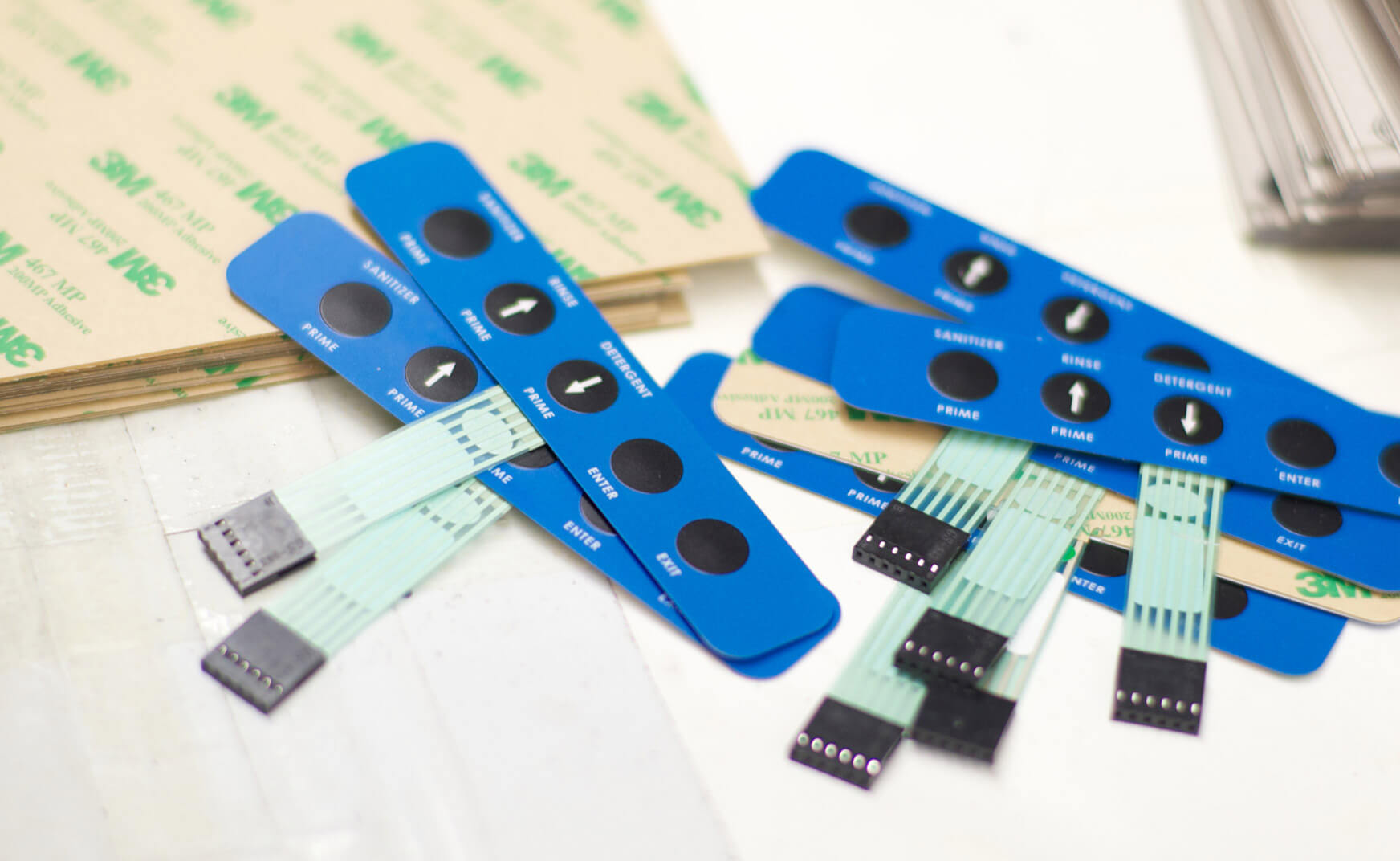The Total Guide to Membrane Switch Modern Technology and Its Applications
Recognizing the Functionality of Membrane Layer Changes for User Interface Tools
The capability of membrane changes stands for a significant improvement in customer interface design, incorporating efficiency with visual versatility. As industries progressively prioritize customer experience, recognizing the nuances of membrane switch innovation ends up being important.
What Are Membrane Layer Switches?
Membrane switches are innovative user interface devices that assist in user interaction with electronic equipment. These flexible components include numerous layers, including a visuals overlay, spacer, and a printed circuit layer. The layout enables a smooth combination right into various digital devices, improving both the aesthetic and functional facets of individual interfaces.
Membrane buttons are typically used in a wide variety of applications, from house home appliances to commercial equipment and clinical gadgets. Their construction normally includes a thin account, making them a suitable choice for compact styles. The responsive comments given by these switches can be crafted to satisfy specific user preferences, making certain efficient communication between the customer and the tool.
Durability is another substantial advantage of membrane layer buttons, as they are resistant to dust, wetness, and chemicals, which improves their life-span popular atmospheres. In addition, these switches can be personalized in terms of shape, dimension, and visuals layout, permitting branding and user-specific functions. On the whole, membrane changes represent a sensible solution for enhancing user experience in digital tools, combining capability with aesthetic charm in an efficient manner.
Exactly How Membrane Layer Switches Over Job
Operating on an uncomplicated principle, membrane layer switches over utilize a layered building and construction to sign up customer input properly. Each switch consists of multiple layers, including a printed circuit layer, a spacer layer, and a leading visuals layer, which are created to work together flawlessly. When an individual presses the leading layer, it compresses the spacer layer, bringing the conductive components of the circuit layer into call with each various other.
This call creates a shut circuit, signaling the tool to perform a certain feature. The style enables various setups, including tactile feedback, which can boost the individual experience by giving a physical experience upon activation. The products made use of in membrane layer buttons typically consist of versatile substrates, such as polyester or polycarbonate, which guarantee sturdiness and resilience versus damage.

Key Advantages of Membrane Switches

An additional significant advantage is their compactness. Membrane buttons are thin and lightweight, which enables suppliers to save space in their gadgets without giving up capability. This attribute is particularly beneficial in applications where weight and quantity are important factors to consider.
Additionally, membrane switches are resistant to dirt, dampness, and chemicals, enhancing their sturdiness. This strength prolongs their lifespan and minimizes the requirement for constant replacements, causing cost financial savings in time.
Furthermore, the tactile responses offered by membrane layer buttons can be optimized to improve user communication. They can include functions such as increased switches or audible clicks, improving functionality and user experience.
Applications Throughout Industries
Customer user interface devices utilizing membrane layer switches useful site are prevalent in a large array of industries, showcasing their adaptability and capability. Membrane Switch. In the medical industry, membrane buttons are indispensable to devices such as diagnostic tools and client monitoring systems, where their resilience and ease of cleaning are critical for preserving hygiene criteria. In the automobile sector, these buttons are used in dashboard controls and infotainment systems, providing a streamlined and modern interface for individuals.
Moreover, the customer electronic devices sector take advantage of membrane switches in devices and handheld gadgets, where small layout and straightforward user interfaces enhance user experience. Industrial applications also leverage membrane layer switches over for control board in equipment and automation systems, highlighting their robustness and resistance to severe atmospheres.
In the aerospace and defense markets, membrane layer switches are utilized in cabin controls and equipment, where reliability and efficiency under extreme conditions are paramount. In addition, the gaming market significantly incorporates membrane buttons in controllers and arcade equipments, adding to an interesting customer experience. Generally, the versatility of membrane changes enables their extensive usage throughout numerous fields, emphasizing their importance in modern-day interface style.
Future Patterns in Membrane Layer Switch Over Modern Technology

In addition, the usage of innovative materials, such as polycarbonate and polyester films, is expected to increase, giving enhanced durability and resistance to ecological stress factors. These products add to the overall long life of membrane buttons, making them ideal for harsher commercial applications.
Additionally, the hop over to here consolidation of smart innovation, consisting of IoT connection, will allow membrane buttons to interact with various other tools and systems, facilitating a more interactive customer experience. This fad aligns with the growing demand for clever devices across various industries, from medical care to consumer electronics.
Finally, customization alternatives are expected to expand, permitting makers to develop bespoke options tailored to particular customer requirements and preferences. These growths will position membrane layer switches as crucial elements in the evolution of interface modern technology.
Final Thought
In verdict, membrane layer switches stand for a pivotal innovation in individual interface technology, providing a reliable check this and functional solution for diverse digital applications. As improvements in product science and touch sensing innovations continue, the functionality and applicability of membrane layer switches are anticipated to increase, reinforcing their relevance in modern digital tools.